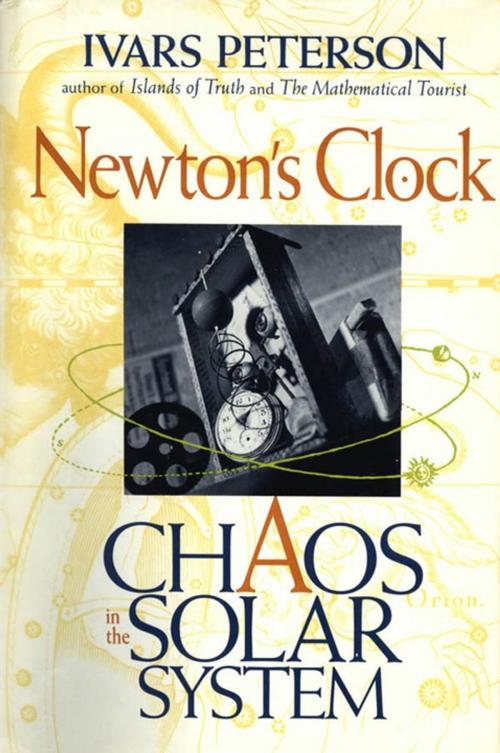Newton's Clock
Chaos In The Solar System
Nonfiction, Science & Nature, Science, Physics, Astronomy, Other Sciences, History, Biography & Memoir, Reference| Author: | Ivars Peterson | ISBN: | 9781466813878 |
| Publisher: | Henry Holt and Co. | Publication: | July 15, 1993 |
| Imprint: | Henry Holt and Co. | Language: | English |
| Author: | Ivars Peterson |
| ISBN: | 9781466813878 |
| Publisher: | Henry Holt and Co. |
| Publication: | July 15, 1993 |
| Imprint: | Henry Holt and Co. |
| Language: | English |
With his critically acclaimed best-sellers The Mathematical Toursist and Islands of Truth, Ivars Peterson took readers to the frontiers of modern mathematics. His new book provides an up-to-date look at one of science's greatest detective stories: the search for order in the workings of the solar system.
In the late 1600s, Sir Isaac Newton provided what astronomers had long sought: a seemingly reliable way of calculating planetary orbits and positions. Newton's laws of motion and his coherent, mathematical view of the universe dominated scientific discourse for centuries. At the same time, observers recorded subtle, unexpected movements of the planets and other bodies, suggesting that the solar system is not as placid and predictable as its venerable clockwork image suggests.
Today, scientists can go beyond the hand calculations, mathematical tables, and massive observational logs that limited the explorations of Newton, Copernicus, Galileo, Kepler, Tycho Brahe, and others. Using supercomputers to simulate the dynamics of the solar system, modern astronomers are learning more about the motions they observe and uncovering some astonishing examples of chaotic behavior in the heavens. Nonetheless, the long-term stability of the solar system remains a perplexing, unsolved issue, with each step toward its resolution exposing additional uncertainties and deeper mysteries.
To show how our view of the solar system has changed from clocklike precision to chaos and complexity, Newton's Clock describes the development of celestial mechanics through the ages--from the star charts of ancient navigators to the seminal discoveries of the 17th centure; from the crucial work of Poincaré to the startling, sometimes controversial findings and theories made possible by modern mathematics and computer simulations. The result makes for entertaining and provocative reading, equal parts science, history, and intellectual adventure.
With his critically acclaimed best-sellers The Mathematical Toursist and Islands of Truth, Ivars Peterson took readers to the frontiers of modern mathematics. His new book provides an up-to-date look at one of science's greatest detective stories: the search for order in the workings of the solar system.
In the late 1600s, Sir Isaac Newton provided what astronomers had long sought: a seemingly reliable way of calculating planetary orbits and positions. Newton's laws of motion and his coherent, mathematical view of the universe dominated scientific discourse for centuries. At the same time, observers recorded subtle, unexpected movements of the planets and other bodies, suggesting that the solar system is not as placid and predictable as its venerable clockwork image suggests.
Today, scientists can go beyond the hand calculations, mathematical tables, and massive observational logs that limited the explorations of Newton, Copernicus, Galileo, Kepler, Tycho Brahe, and others. Using supercomputers to simulate the dynamics of the solar system, modern astronomers are learning more about the motions they observe and uncovering some astonishing examples of chaotic behavior in the heavens. Nonetheless, the long-term stability of the solar system remains a perplexing, unsolved issue, with each step toward its resolution exposing additional uncertainties and deeper mysteries.
To show how our view of the solar system has changed from clocklike precision to chaos and complexity, Newton's Clock describes the development of celestial mechanics through the ages--from the star charts of ancient navigators to the seminal discoveries of the 17th centure; from the crucial work of Poincaré to the startling, sometimes controversial findings and theories made possible by modern mathematics and computer simulations. The result makes for entertaining and provocative reading, equal parts science, history, and intellectual adventure.















